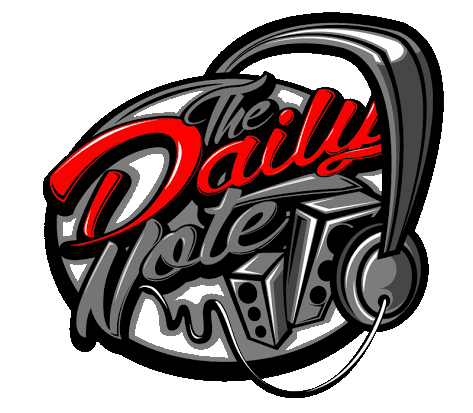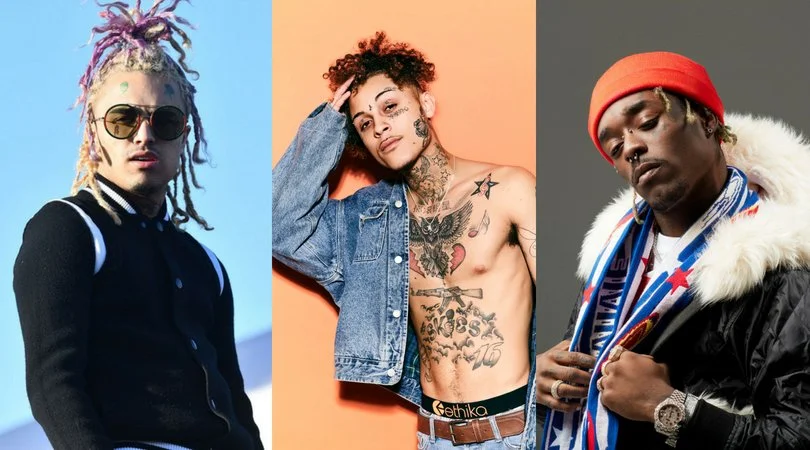What Will The 2020’s Sound Like? (Article)
What up one & all. Sky Bento here on the check-in. Big Bento Energy is most definitely in full effect. Hope you & yours are well, drinking your water, protecting your mental health, knowing the vibes & all. Today we’re here to talk about decade, as we are now officially a quarter of the way through the 2020’s (2.5 years, do the math fool). Every decade has its own identity, shaped by many different variables such as current political climate and of course the pop culture of the time. 90’s hip-hop was molded by cinematic sounds and a sample-based foundation. The 2000’s were shaped by ringtones and had simpler beats to accompany the polyphonic sounds of Nextel & Nokia. The 2010’s went back to the 80’s with simpler, more chant-based raps and rattling hi-hats with the arrival of trap. The end of the 2010’s left us in a very unique place though. Genre is pretty much a thing of the past, as most of today’s most popular artists are known for their genre fluidity, or at least take influence from many different styles of music. So let’s reflect on the past few years and see where the number one genre in the world could go from here.
As always, these are just MY opinions and do not reflect the views of TDN as a staff, brand or a m***********g crew. Feel free to crucify me on Twitter @plzsaythebento. Iight, let’s get to it.
SOUNDCLOUD RAP
I can’t wait until ten years from now when we get a full documentary on Soundcloud. The website is probably more influential than any social media platform in terms of its effect on music - specifically RAP MUSIC. Soundcloud gave independent artists everywhere an easy way to release music and thus the floodgates blew wide open. Music was already easier to create than ever before with the abundance of free recording software and widespread availability of microphones. I had friends that literally recorded on the microphone that came with the Rock Band video game. Wild times. With the barrier to entry as low as it had ever been, the musicians of Soundcloud employed a DIY ethos. The music was very rough sounding and unprofessional. It became the sound of the underground very quickly. There was a lot of influence from punk and indie rock in the Soundcloud scene through artists like SCXRLXRD, Lil Tracy, and of course the late XXXtentacion. But no subgenre of rock had more of an impact on this “Soundcloud rap” era than emo.
Underneath the distorted 808s brash lyrics and screaming lied a generation of troubled and hurt kids. The collective angst inspired rappers like Lil Uzi Vert & Juice WRLD to incorporate more and more emo elements into their music. And it blended incredibly well with the booming 808s and high octane hi-hat patterns of modern trap. This all culminated in a production style that was ripe for mainstream consumption, especially Juice WRLD’s Chicago drill inspired rendition of it. The beats typically used catch guitar melodies and chords, following a simple 808 pattern and a two step hi-hat pattern that hit every 16th note. Even if you have no idea what I’m talking about musically, I’m sure you could recognize the sound when you hear it. With the death of Juice WRLD, the genre lost its front runner and the elements of the style have kind of dispersed into other subgenres. Artists like Trippie Redd, iann dior & MGK are keeping the sound alive in the mainstream but aren’t seeing the widespread acclaim that their forefathers have. The music has become derivative of those early days, but simply fails to capture the magic. Still, the influence of artists like Juice & XXX will be felt for years to come.
PAIN MUSIC
Emo trap doesn’t exist without regular trap. Trap entered the 2010’s as the dominating new sound after years of being perfected by artists like Gucci Mane, (Young) Jeezy, and T.I.(P.). By the end of the decade the genre had devolved a bit, in a good way. Even more apparent, it kind of seeped into every other style. Pretty much all hip-hop uses the same claps, snares, 808s, and hi hats as trap. But the overall sound has moved away from big and bombastic to a more intimate style. As emo cross-pollenated with trap, and trap became melodic, a lot of trap artists did the more low key guitar beats some justice and incorporated tales of street pain. This has given us the trap styles we’ve seen take over the beginning of this decade. Artists like Polo G, Rod Wave brought this “pain music” to the mainstream thanks to the influence artists like Young Thug with his Beautiful Thugger Girls project in 2017.
A lot of these beats didn’t rely on the simple two step hi hats like emo trap, but rather they used hi hats to accent the space in between snares and 808s. Another early pioneer of this style was Lil Baby, especially on his collaborations with Gunna. But over time, Baby became a better rapper and developed a signature style more reminiscent of earlier trap with its pianos and synths. The key difference is the triplet. For the uninitiated, that’s the da-da-da kind of flow that the Migos popularized. Baby uses these triplets not only in his raps but also in his beats, typically in the piano and/or hi hats. Lil Durk of Chicago drill fame also uses beats as part of his resurgence, and has been to push his melodic take on drill into new territories. These beats are bigger and more bombastic, with an added feeling of urgency, anxiety and crisis, while the raps are either aggressive and brash or smooth and calculated.
DRILL
From this same family tree of modern trap, we have the newest incarnation of drill. Originally a style of harsh, heavy, hip-hop focused on violence, drugs, and life in the streets of Chicago, drill has become worldwide. Drill first found popularity over in the UK by mixing with grime. This is where it found its iconic hi hat pattern, sometimes replaced with filtered snare instead. You know what I’m talking about. It’s the thing that goes “tuh, tuh, tu-tuh tuh, tu-tuh tuh…” over and over again. The sliding EDM-style bass also originated in the UK. None of these sounds would find their real footing in the mainstream consciousness of hip-hop until the genre made its way back overseas and found footing in Brooklyn, NY. New York has a high Latino population, so it’s no surprise that the drill hat pattern mimics the rhythm of reggaeton. NY MC’s play on this (either consciously or subconsciously), making the music much more danceable.
Through this new wave of drill music reaching New York, it quickly became the dominating sound of the East Coast by seeping into other styles of music just like trap before it. Bronx took drill and really gave it some more New York flavor by making it more sample-based. This has been the current wave of music over the past couple of years as entertainment in general has begun to rely more and more on nostalgia. But when you inject that into drill music, you get a sound heavily reminiscent of the Soundcloud wave. Brash delivery, violent content, and a general feeling of anxiety and paranoia. Something about the drill drum pattern that just feels unsettling even as an instrumental. The hi hats come in an unequal pattern that just knocks off the balance while the sliding bass feels dark and brooding. Between the slick cinematic sounds of Brooklyn drill and the fun rawness of Bronx drill, New York is back on the map and helping lead the charge into the new decade.
MOVING FORWARD…
Which brings us to 2022. Contrary to popular belief, the hi hats are really the controlling factor in hip-hop production. Trap has become the baseline standard, and beats have been given more space to let artists showcase their individual styles and personalities. Some might say production has gotten simpler but in actuality the producer are just creating canvases that really allow artists to take control. In doing so, the rappers that actually rap have been able to really make a comeback and are picking interesting production to create unique flows over. Sampling has really come back into prominence in a way not seen since the 90’s. Beats are the backbone of hip-hop and ultimately what determines the subgenre of a record is the beat. Kendrick Lamar’s “HUMBLE.” may not be your conventional trap record, but if that beat were given to 2 Chainz nobody would call it anything other than trap. This is why these canvases are so important because despite the flavor they give an artist, a proper artist can and will still take the record to places it may not go in other hands. Who knows what sound the 2020’s will have going forward. I’m sure there are new styles yet to be invented that will play a major role in the latter half of the decade. But one thing is for sure, this decade is going to sound interesting.




